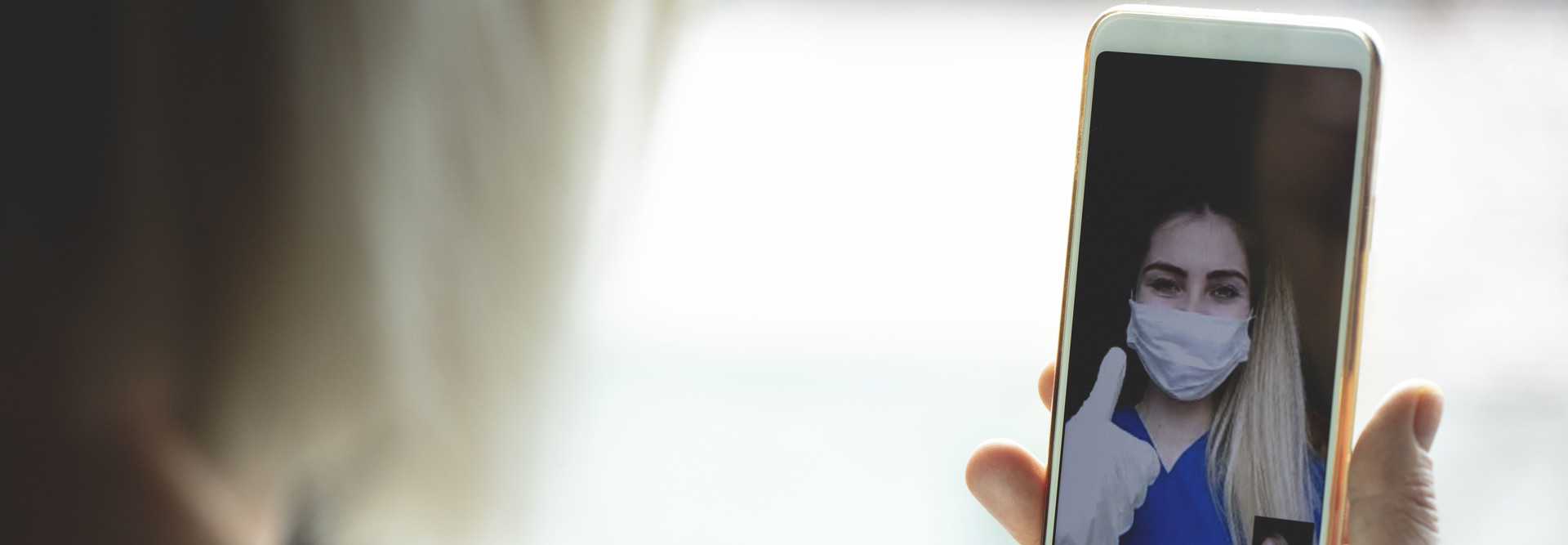Editor’s note: This content series, featured in your Insider dashboard, will be rolled out over the coming weeks to offer advice on driving collaboration between IT teams and clinical staff. (If you’re not already an Insider, sign up for free here.) The associated articles explore why nurses should be included in the decision-making process for purchasing new equipment and how to develop this relationship as part of your IT strategy.
As telehealth expands at a record pace among users and providers, a growing number of medical specialties are offering virtual appointments to patients from a distance.
Increasingly, nurses are the ones to deliver or coordinate the care.
Their use of telehealth was already prospering before the COVID-19 pandemic in settings such as hospitals, clinics, call centers, schools, and post-acute and long-term care facilities, the American Telemedicine Association notes.
But their role is expanding, and quickly.
“Nurses are really there to help promote the health of our community, so we leverage our nurses to teach and support patients,” says Kris O’Shea, senior vice president and chief nursing executive for WellSpan Health.
Last year, the Pennsylvania health system did about 1,900 video visits. As of April 16, it had conducted 4,000 video visits and 9,000 phone visits. As of mid-May, WellSpan was doing 40 percent of its total medical practice visits this way.
Some of those appointments are with doctors, but nurses are leading the charge in virtual care delivery, O’Shea says — especially in medicine management and working with patients who have chronic illnesses such as diabetes and chronic obstructive pulmonary disease (COPD).
Telehealth for Nurses Brings Advantages and Insight
Video visits via a smartphone, tablet or webcam can offer benefits over a phone call, WellSpan nurses have found. One nurse reported having a telehealth session with a patient who had COPD and smoked through the entire session, offering clear insight about potential challenges to treatment.
Nurses are “learning a lot about their patients just by observing their surroundings,” O’Shea says.
Her nurses also run the health system’s behavioral health group therapy sessions, which have moved from onsite gatherings at the organization’s psychiatric hospital to Zoom videoconferencing during the COVID-19 pandemic.
READ MORE: Learn how telehealth supports mental health care in remote and underserved areas.
As a result, WellSpan has seen a 30 percent participation increase in these programs — suggesting an opportunity to eliminate some barriers to care. “Sometimes patients are in severe pain, have ambulatory issues or other disorders that impact their ability to attend regularly,” O’Shea says.
How Nurses Use Virtual Care to Drive Efficiencies
Nurses have played a crucial role in ramping up telehealth visits this year at LCMC Health, says Hannah Cunningham, a nurse for the New Orleans organization.
They’re helping manage workflows to keep nonurgent cases at home and allow doctors to focus on critical patients.
“You don’t necessarily have to see your doctor physically,” Cunningham says. “You may have questions and can do a routine triage call with a nurse.”
Her practice, which has four doctors, has also found that nurses doing telehealth visits cut down on appointments “where that patient didn’t need to come in in the first place,” she says — issues such as medication reconciliation or instructions for taking insulin.
Cunningham expects nursing-assisted telehealth visits to continue, even as patients are starting to come back into LCMC Health offices. “It’s a really nice option,” she says.
Nurses Take Telemedicine Programs to the Next Level
Virtual care can also involve in-person communication.
Nurses employed by nursing homes and assisted living facilities, for example, are often the onsite source through which outside doctors can assess patients using telehealth, says Gregory Alexander, a professor of nursing at Columbia University and chair of nursing informatics leadership at the American Medical Informatics Association.
Nurses can handle the technology aspect of a video visit but also take and communicate patients’ vital signs. This has become especially helpful during the COVID-19 pandemic, Alexander says, “because you don’t want to expose somebody unnecessarily to infectious disease” by taking them to a doctor’s office or a hospital.
READ MORE: How are remote patient monitoring tools aiding the COVID-19 fight?
These kinds of virtual visits are “really trying to manage a population of patients in the community by using technology to beam in and use staff to help as liaisons to manage people in nursing homes,” he says.
That notion also works in reverse: At Banner Health, which has locations in multiple Western states, virtual nurses each can monitor 40 to 45 patients a day via telehealth, across three to six facilities in the region.
The capacity marks “a far shot from the five or six patients I could monitor as a bedside nurse in the past,” Alice Sneed, a critical care nurse who has been working in telehealth for eight years, wrote in a blog post for Philips, which makes the electronic intensive care unit software called eCareManager that Banner Health uses.
For hospitals without specialized ICUs, caretakers like Sneed are a critical link. “[O]ur virtual telehealth command center allows me to monitor patients remotely so these local care teams can keep the patient in their community hospital, rather than having to transport them four or five hours away to access higher-acuity care,” she writes.











